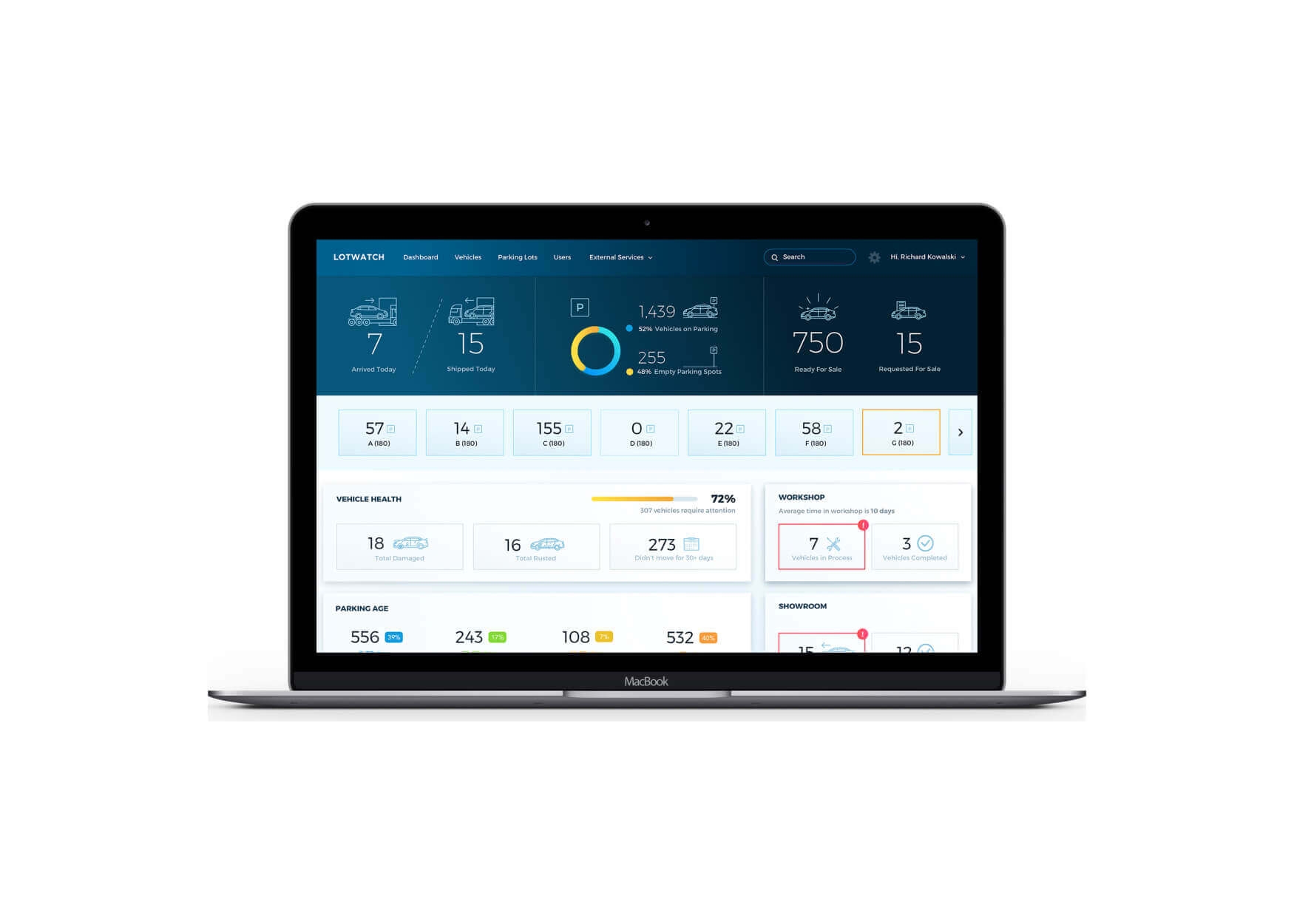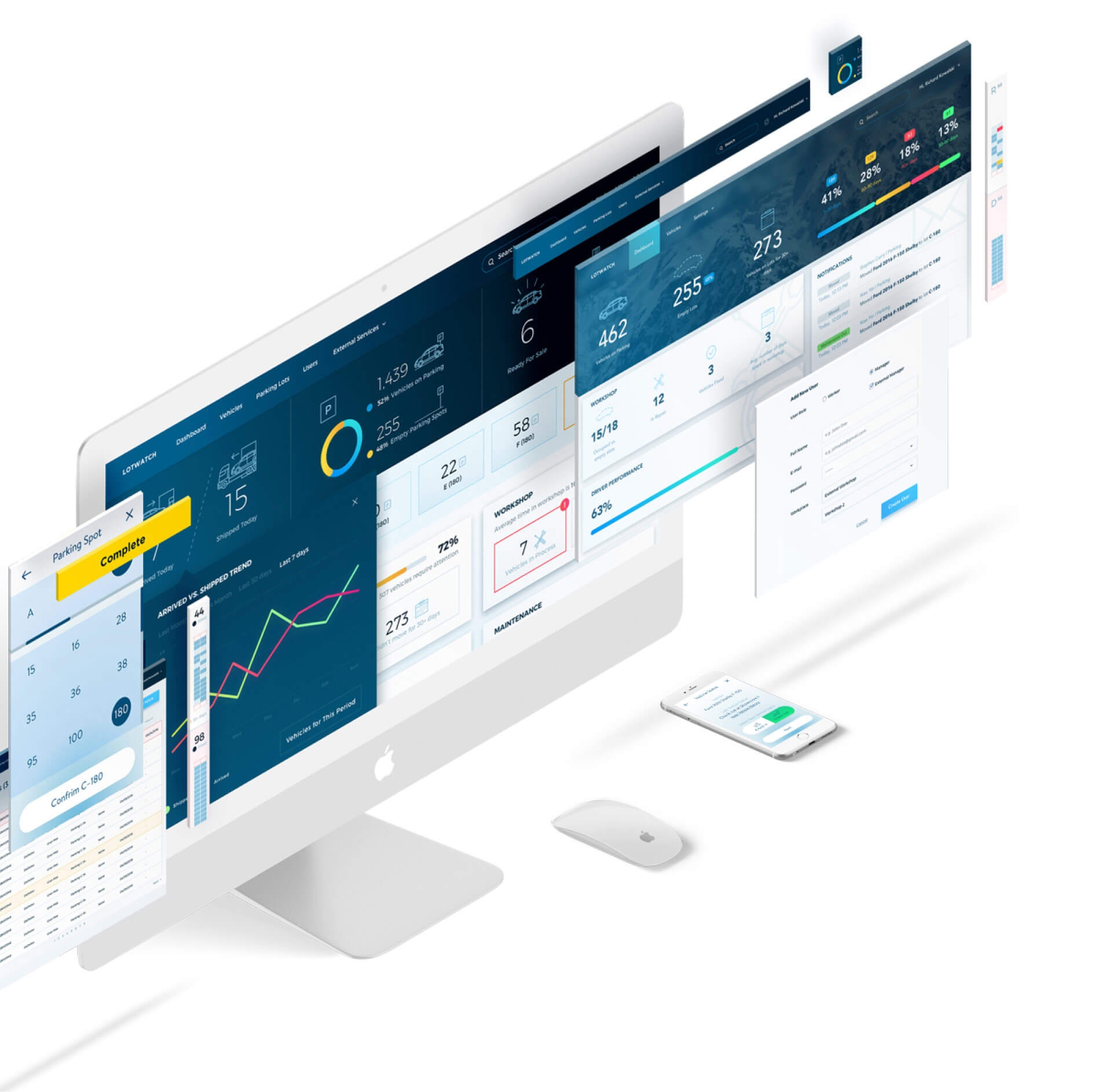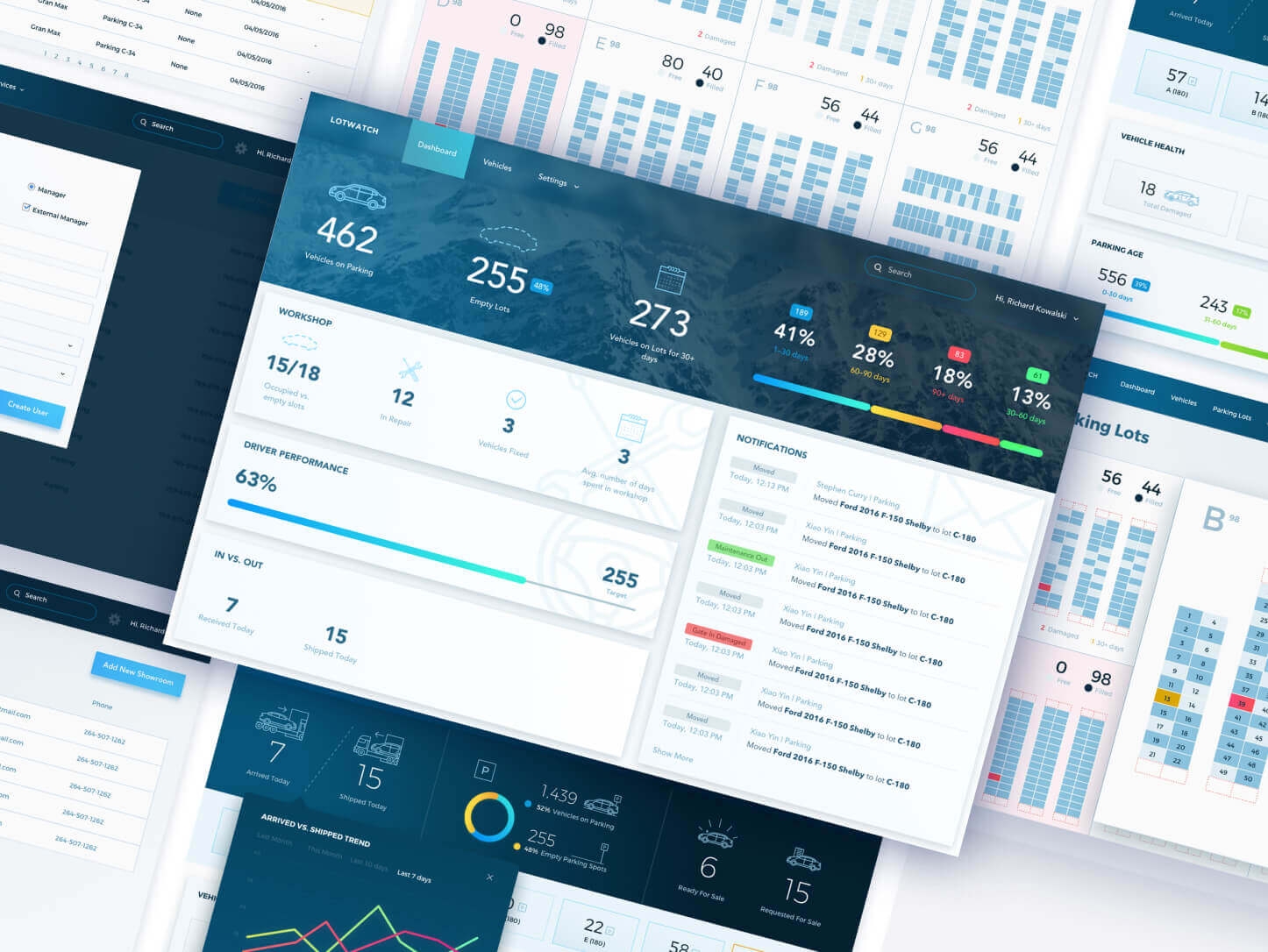Project Overview
Managing large parking lots with pen and paper or spreadsheets is a thing of the past. Lot Management Systems help businesses get their head around and control these complex workflows.
Miotiv, an IoT solutions provider, approached SpiceFactory to help them build a real-time parking lot management system. The goal was to create a scalable and responsive solution that enables users to capture and act on real-time data (vehicle position, inventory status, etc.)
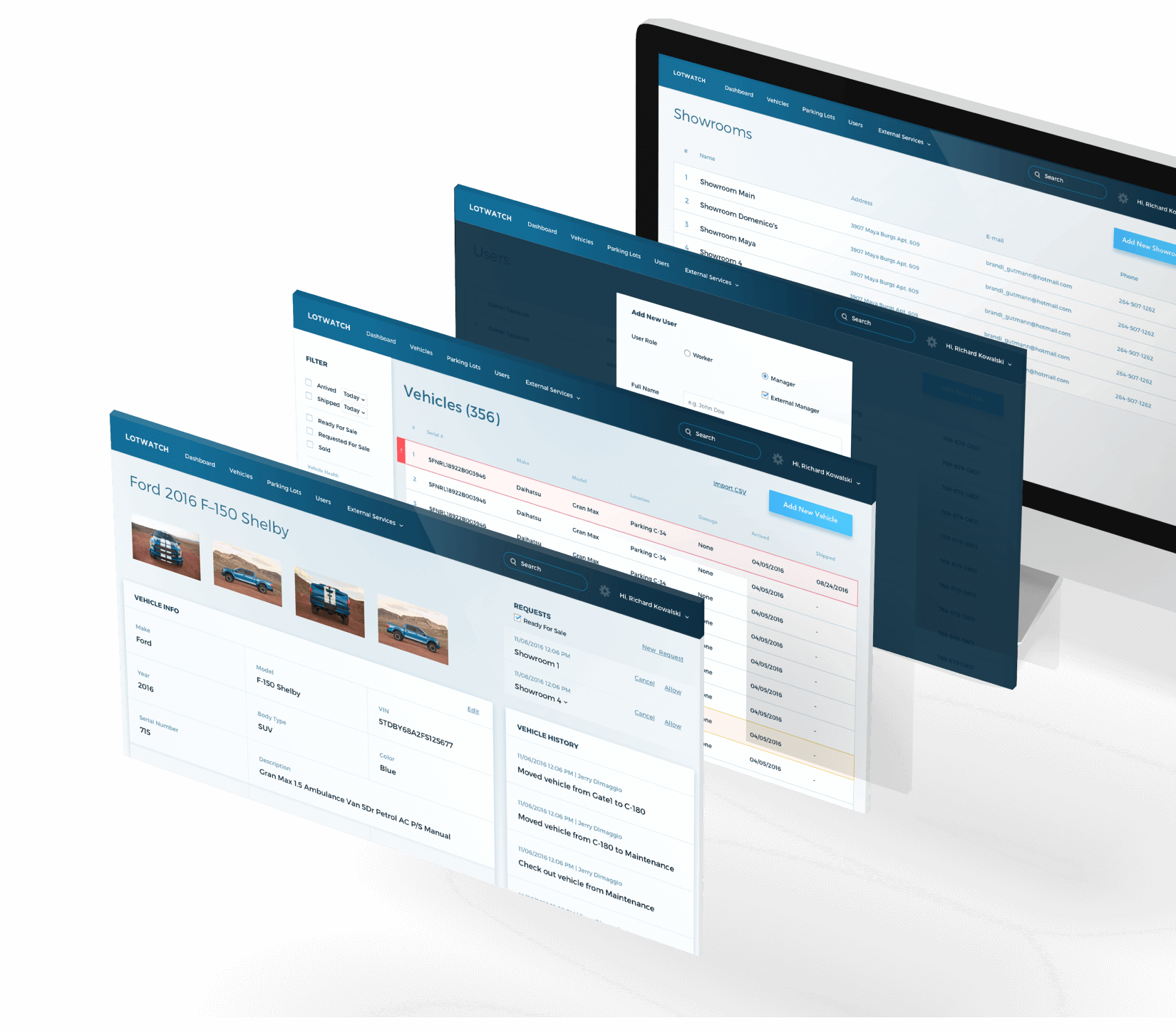
The Challenge
The main challenge was creating an interactive, real time, and easy to use (zero learning curve) system to address complex workflows and co-located parking lots, service network, and showrooms. First parking lot was managing few thousand cars with few hundred cars in and out daily.
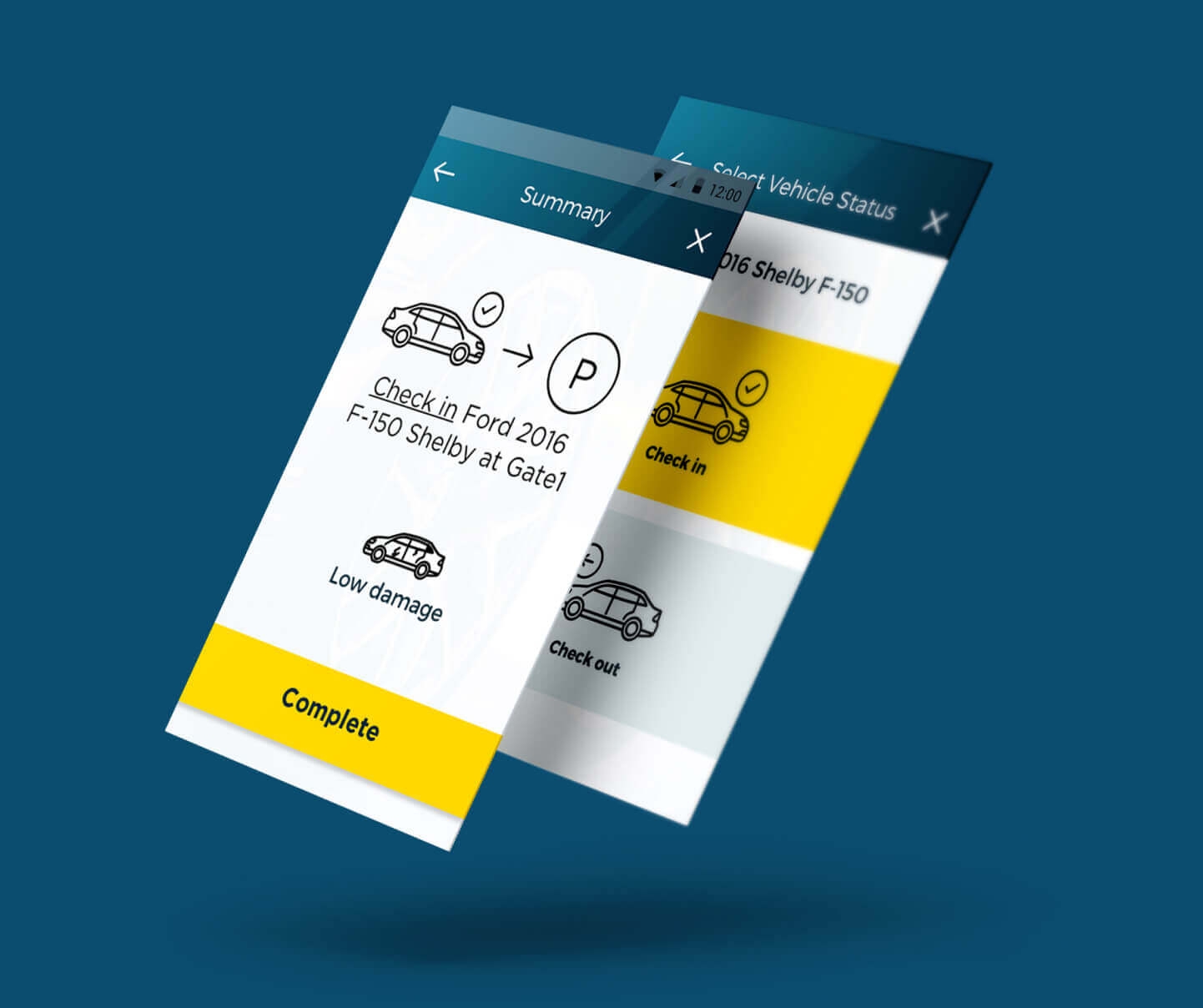
An estimated 50 billion “things” will be connected to the Internet by 2020 and they will become more and more capable of collecting, exchanging and analyzing data, and providing remote services.
Simplifying the workflow
SpiceFactory developed a custom system for dynamic workflow management that spans across web and mobile application. Any change to the workflow results in different UI for the client consuming it. This allowed system administrator to dynamically manage workflows for different user roles and locations.
Building solutions for improved lot efficency
We’ve built several solutions that focus on enabling parking lot employees to work more efficiently. With mobile surveying app, employees can easily update car status and its location on the parking. Another game changer for the way they work was a Smart Notification System that dramatically improved car maintenance.
In addition, managers got detailed real-time dashboard to track all the operations on the lot and control performance of their employees, while providing tools that help them work smarter.
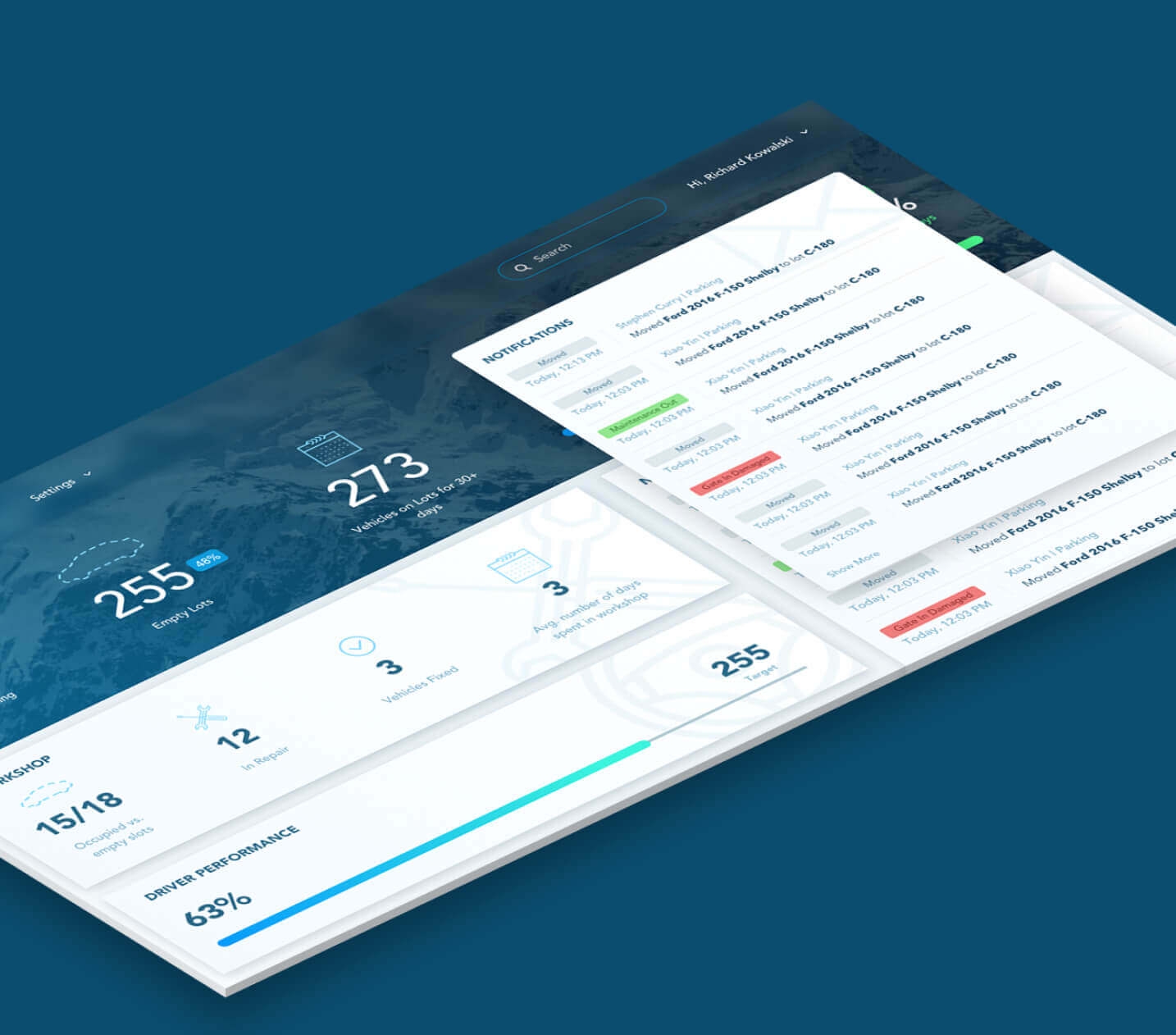
Software architecture
The approach we have used to develop the final solution relied on event sourcing. Event Sourcing ensures that all changes to application state are stored as a sequence of events. This allows us to have complete event log, present current state and reconstruct the path it took to get here.
This approach gave us a great foundation to automatically adjust the state to cope with retroactive changes as the system evolved over time and requirements changed.
